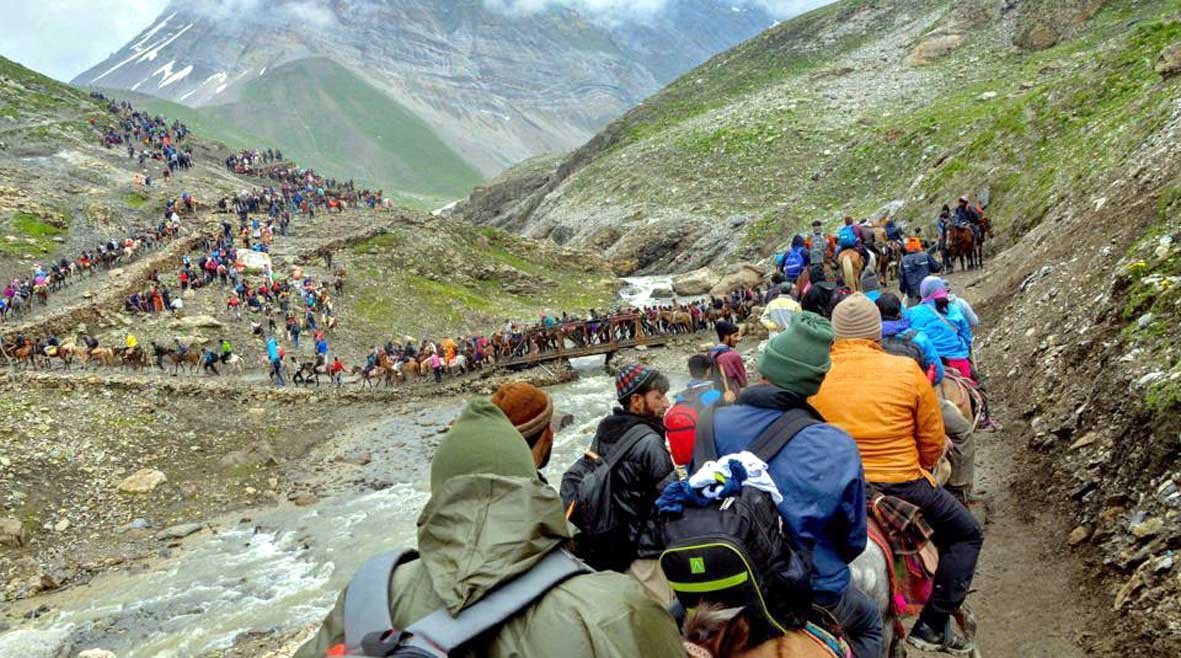NEW DELHI, June 9 (PTI): Union home minister Amit Shah will chair a high level meeting on Friday to take stock of the preparations and security for the upcoming Amarnath pilgrimage in Jammu and Kashmir, sources said.
The 62-day-long annual pilgrimage to the holy cave shrine of Amarnath, located at a height of 3,880 metres in the south Kashmir Himalayas, will begin on July 1 and continue till August 31.
The home minister will review the preparations for the Amarnath pilgrimage with top officials of the central government and Jammu and Kashmir administration, the sources said.
Shah will also take stock of the plans being formulated to ensure foolproof secretary for the pilgrimage, they said.
According to the Sources, there have been intelligence inputs and the Pakistan-based terror outfits may try to disrupt the pilgrimage for which adequate security forces will be deployed.
All stakeholders of the pilgrimage are expected to take part in the meeting and all issues relating to arrangements being made for it would be discussed.
A lot of snow have been found along the both the tracks — Baltal and Pahalgam— leading to the holy cave and therefore the Border Roads Organisation has been given the task to clear the snow by June 15, the sources said.
Last year, 3.45 lakh people visited the holy cave and this year, the figure could go up to 5 lakh.
The sources said to avoid any incident like last year’s when 16 people were killed after flash floods triggered by heavy rain near the shrine, the National Disaster Response Force has started identifying ideal locations for setting up pilgrim camps keeping in mind any possible unforeseen natural disaster.
The Indian Air Force helicopters are expected to be deployed to carry out aerial sorties in the upper reaches of the holy cave to check for glacial events and the formation of lakes that may trigger flash floods downhill.
Last year, such sorties were conducted only after the flash floods occurred in June, but this year, the exercise will be undertaken before the start of the yatra and at continuous intervals during the two-month pilgrimage, the sources said.
The aerial surveys may be conducted by a team with expertise in remote sensing and satellite, hydrology and disaster response. Once a dangerous water build-up is spotted, contingency measures will be taken all along the pilgrimage route, especially the area near the cave shrine, they added.












